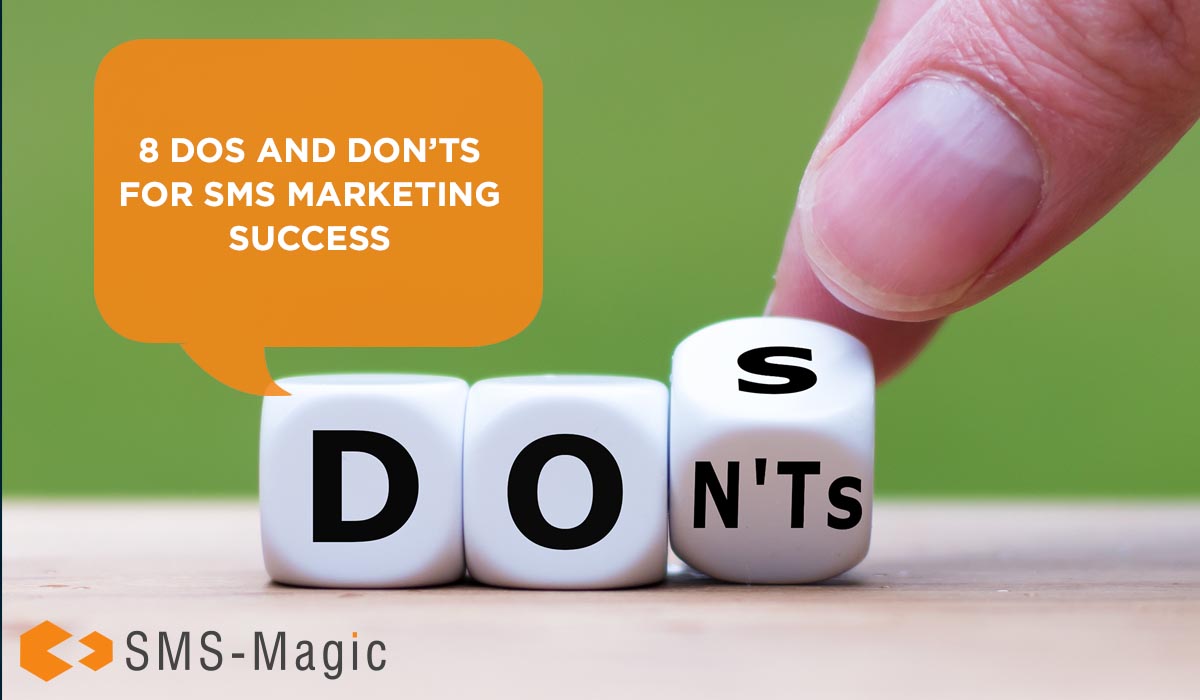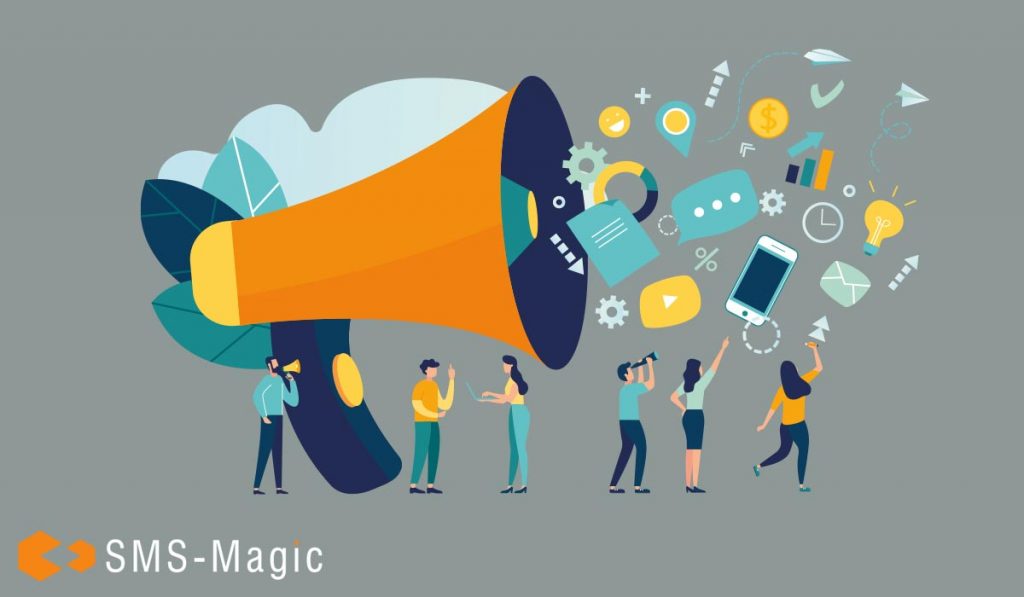
All it takes is 2 easy steps
If you're a winner, we will send you $100 Amazon gift card at Dreamforce!


Messaging is an effective marketing tool because consumers and businesses find it convenient, unobtrusive and fast. Adding SMS messaging to complement your existing marketing strategy is a great way to reach your customers. As in all marketing strategies, there are great ways to achieve the desired results, and there are some simple mistakes that can easily turn off your audience.
To help your SMS marketing plan succeed, we’ve curated some “Do’s and Don’ts” to help you prepare for your venture into SMS marketing.
It’s important to understand the rules and regulations for messaging in your region, country or state. The Telephone Consumer Protection Act (TCPA) regulates SMS marketing in the United States and requires companies to obtain written consent before sending their first text.
You can ask for written consent with clever opt-in strategies, but that’s only one part of the compliance requirement. Here are guidelines for asking customers to opt in:
If your customer asks to opt in, send a confirmation message immediately. Here’s an example:
Reply OK for texts from YUM Pizza & get 15% off coupon. Max 1 msg/wk.
Msg & data rates may apply. Text HELP for more info & policies.
Text STOP to unsubscribe.
This reply text takes care of notification requirements. You can set up automated responses when someone texts “OK,” “STOP,” or “HELP” with links to more information and the coupon.

Growing your SMS list may seem daunting when you can’t text your consumer to get consent, but you can invite them to opt-in in imaginative ways. Adding an incentive for signing up for your messages is key, and don’t forget to add your compliance language when using a mixture of these innovative methods.
Sending a campaign that engages your customer over a period of time is the perfect way to build interest about a product or launch. You may have lots to say about a new release. Yet, when you consciously package your ideas into smaller messages sent at regular intervals, your audience stays engaged throughout the campaign. A multi-messaging flow for a product release could look something like this:

Automations are an efficient way to send your customers personalized messages triggered by their behavior at different milestones. Your triggers should fire automatically while your customer naturally moves through their shopping process. For example, if a customer abandons their cart, a trigger sends an automated conversational message like: “Did you forget something?” Abandoned carts aren’t all treated the same, though. Factors such as the value of the purchase or a repeat purchase should trigger different automations.
Don’t forget the “quiet hours” rules when working to stay compliant. The TCPA prohibits any telephone solicitation – including SMS messages – any time before 8 a.m. and after 9 p.m. in your recipient’s time zone. Have customers in different time zones? You’ll need to build that into your automation.

Even though you’ve created a checkbox for opt-ins on your forms and paperwork, stay compliant by keeping those boxes unchecked. The customer must check that opt-in box on their own, not uncheck it to opt-out.
You might also consider using a double opt-in. When a customer responds to your invitation to receive messages, you send an immediate message asking them to confirm their request. Double opt-in messages can be sent automatically, making sure everyone receives one. Forgetting to create a double opt-in is a missed opportunity to validate subscribers and ensure you’re staying compliant.
Creating a segmented list before sending a campaign is a powerful tool for your SMS marketing strategy. By using subsets of subscribers, you’re ensuring that the right message gets to the right person at the right time. And when consumers receive relevant messages, you’ll see more engagement and opportunities for cross-sells, up-sells, and product suggestions. Some good segment samples include engaged subscribers, VIPs, those who used a keyword to subscribe, and anyone who has yet to purchase.

Triggers should fire when customers take action, like leaving after browsing, subscribing, or when their order was delivered. To make the most of your automated messaging and to keep your brand at the forefront of your customer’s mind, you should have multiple triggers set up to send personalized automated messages at various stages of your customer’s experience.
SMS and MMS messaging can bring added success to your multi-channel marketing efforts. By following a few simple suggestions – and avoiding others – you can increase customer interest in your products and responses to your messaging campaigns. If you’re ready to give messaging a try, contact SMS-Magic for a demo or a free trial today!
Stay updated on business text messaging
Text MAGIC for Demo to
USA: 36343
AUS: (61)409564682
UK & ROW: +44 7860017509
Email: care@sms-magic.com